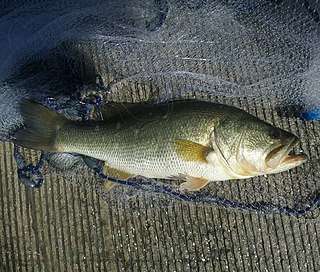
The dark-fronted babbler is an Old World babbler found in the Western Ghats of India and the forests of Sri Lanka. They are small chestnut brown birds with a dark black cap, a whitish underside and pale yellow iris. They forage in flocks in the undergrowth of forests constantly making calls and uttering alarm calls when disturbed.

Carpenter ants are large ants indigenous to many forested parts of the world.

The eastern woodrat, also known as the Florida woodrat or bush rat, is a pack rat native to the central and Eastern United States. It constructs large dens that may serve as nests for many generations and stores food in outlying caches for the winter. While widespread and not uncommon, it has declined or disappeared in several areas.

The banded sugar ant, also known as the sugar ant, is a species of ant native to Australia. A member of the genus Camponotus in the subfamily Formicinae, it was described by German entomologist Wilhelm Ferdinand Erichson in 1842. Its common name refers to the ant's liking for sugar and sweet food, as well as the distinctive orange-brown band that wraps around its gaster.

Rhineura floridana, known commonly as the Florida worm lizard, graveyard snake, or thunderworm, is a species of amphisbaenian in the family Rhineuridae. The species is the only extant member of the genus Rhineura, and is found primarily in Florida but has been recorded in Lanier County, Georgia. There are no subspecies that are recognized as being valid.

Myrmecophila is a genus of plants belonging to the family Orchidaceae. It is native to southern Mexico, Central America, the West Indies and Venezuela.

Camponotus nearcticus, commonly named smaller carpenter ant, is a relatively small carpenter ant. Its appearance is similar to Lasius niger, commonly named the black garden ant. The ant is a household pest.

Camponotus vagus is a species of large, black, Palaearctic carpenter ant with a wide range that includes much of Europe, a large area of Asia, and part of Africa.

Cornutia obovata is a rare species of tree in the mint family, and formerly considered a member of the verbena family. It is endemic to forested slopes in Puerto Rico, where its common names are capá jigüerilla, nigua, and palo de nigua. When it was added to the endangered species list of the United States in 1988 there were only seven individuals known to remain in the wild. By 1998 there were eight plants known. This is considered one population divided amongst a few locations in the mountain forests of the island.

Blochmannia is a genus of symbiotic bacteria found in carpenter ants and their allies in the tribe Camponotini. As of 2014, Blochmannia has been discovered in the guts of over 60 species across 6 genera within the Camponotini, and is predicted to be pervasive throughout the tribe. Blochmannia was first discovered by zoologist Friedrich Blochmann in 1887, who described "bacteria-like structures" in the ovaries and midgut of Camponotus ligniperdus in 1887. In 2000, Candidatus Blochmannia was proposed as its own genus.

Crematogaster carinata is a species of ant in the tribe Crematogastrini. It was first described by Gustav Mayr in 1862. It is native to Central and South America, where it is a common species, forming large colonies in the canopy of the forest.

Camponotus aurocinctus is a species of ant in the genus Camponotus. The ant was described by Smith in 1858.

Camponotus floridanus, or Florida carpenter ant, is a species of ant in the genus Camponotus. First described as Formica floridana by Buckley in 1866, the species was moved to Camponotus by Mayr in 1886. The ant is widespread in Florida and occurs as far north as North Carolina and as far west as Mississippi.

The black-headed sugar ant, also known as the brown sugar ant, is a species of Formicinae ant endemic to Australia. Found throughout most states, the species is a member of the genus Camponotus, a cosmopolitan genus of ants commonly known as carpenter ants. It was formally described and named by British entomologist Frederick Smith in 1858. These ants are characterised by their black head, reddish-brown mesosoma and black gaster, which can change in colour.

Camponotus niveosetosus, commonly known as the hairy sugar ant, is one of the smaller species of sugar ant. It is native to an extensive region in the eastern Afrotropics.

The Florida bass is a species of freshwater ray-finned fish, a black bass belonging to the sunfish family Centrarchidae of order Perciformes. It is found in the southeastern United States.

Camponotus singularis is a species of ant that is native to Asia. It is a large species, with workers' sizes reaching up to 18 mm (0.71 in) and queens reaching up to 20 mm (0.79 in). It usually has a red head and a black/grey body. Sometimes Camponotus singularis colonies live in the top and middle sections of tropical rainforest canopies. It occupies a large range, from Nepal to the islands of Borneo and Java.

















